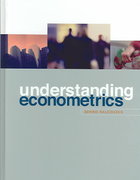Question
Three players live in a town, and each can choose to contribute to a streetlamp fund. The value of having the lamp is 3 for
Three players live in a town, and each can choose to contribute to a streetlamp fund. The value of having the lamp is 3 for each player, and the value of not having it is 0. The mayor asks each player to contribute either 1 or nothing. If at least two players contribute, then the lamp is installed. If one player or no player contributes, then the lamp is not installed (contributors never get their money back). Players decide whether to contribute (action C) or not (action N) in sequence, and observe the decisions of their predecessors: first player 1 decides between C and N, then player 2 sees what player 1 did and decides between C and N, and lastly player 3 sees what both players 1 and 2 did and decides between C and N.
(a) Draw the extensive form of this game.
(b) How many pure strategies does player 3 have in this extensive-form game?
(c) Find all pure-strategy subgame perfect equilibria of the game. You need to specify the equilibrium action at every decision node. Which players contribute in equilibrium?
(d) Does the game have a Nash equilibrium in which player 1 contributes to the fund? If yes, identify an equilibrium with this property; if not, explain why not.
Step by Step Solution
There are 3 Steps involved in it
Step: 1

Get Instant Access to Expert-Tailored Solutions
See step-by-step solutions with expert insights and AI powered tools for academic success
Step: 2

Step: 3

Ace Your Homework with AI
Get the answers you need in no time with our AI-driven, step-by-step assistance
Get Started


